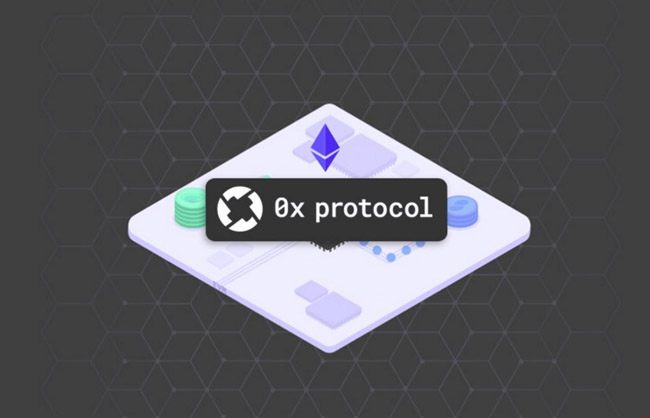0x is a project to design an open protocol that will allow for a decentralized exchange as part of the Ethereum blockchain. It was created using Ethereum smart contracts, and can be used by any person or group to create a global decentralized exchange.
The 0x team took on this project because they are convinced that in the future there will be thousands of Ethereum based tokens, and they wanted to create a trustworthy and efficient way to exchange them. As you’ll see in the following article, 0x has been designed to be different, not only from centralized exchanges, but also from the other decentralized exchanges.

0x Protocol Review: Who’s Behind the 0x Project
The 0x project was co-founded by Will Warren and Amir Bandeali in October 2016, and the two are now part of the 0x team as CEO and CTO respectively. Both came from a background of smart contract research and development. Prior to that Warren conducted applied physics research at Los Alamos National Laboratory. Bandeali comes from the financial world, where he used to be a fixed income trader. Other team members have backgrounds as blockchain engineers, business strategists, software engineers and architects, graphic designs, and several other skill sets. There is also an advising group for the 0x project and it is comprised of the founders or management from companies such as Coinbase, Polychain Capital and Pantera Capital.
The 0x Project’s Goal
When the 0x Project was founded it was with the hopes that the world would come to allow for any asset to be represented on the Ethereum blockchain. That would include not just the current range of cryptocurrencies, but also real-world fiat currencies and physical assets as well as items such as digital game tokens or loyalty program tokens. The founders realized that this type of tokenization would lead to thousands of different tokens, and that would require an efficient and trustless method of exchange. The founders did appreciate the value being brought by decentralized exchanges, but also saw room for improvement. So, they created the 0x Project to address the inefficiencies of current decentralized exchanges, and the inability of exchanges to work together.
How Centralized and Decentralized Exchanges Differ
A centralized exchange is one that is run by a single entity. This single entity structure also provides a single point of failure for the exchange, which is known to be a negative feature. When using a centralized exchange users are required to deposit their funds with the exchange, and the exchange then has the role of connecting buyers and sellers in real-time. Coinbase is one example of a centralized cryptocurrency exchange. Centralized exchanges are vulnerable to hacking attempts and to front-running by insiders.
Decentralized exchanges were developed to avoid the vulnerabilities of centralized exchanges. In a decentralized exchange there is no single point of control or failure, and users do not need to deposit their money with the exchange to conduct a trade. Instead, the decentralized exchange relies on digital signatures to authorize trades. One trade-off made for this security is in speed. Historically centralized exchanges are very quick in completing orders, while decentralized exchanges are slower. Centralized exchanges also tend to have advanced trading tools and better designed user interfaces, at least currently.
0x Project Improving on Decentralized Exchanges
While it’s true that the 0x Project is most similar to a decentralized exchange, there are still some notable differences. The Project has attempted to address the largest issues that decentralized exchanges face. These are that they can’t connect with each other, they are illiquid and they are slow. Decentralized exchanges suffer from these detractions because every new order or change has to be written to the blockchain. This means everything is held to the block times, and that there are network fees with every single interaction made.
0x has attempted to remedy these issues by creating a standard protocol. This protocol is them applied to every order relayed off the blockchain. This significantly speeds the process sand makes it less expensive since the order doesn’t need to return to the blockchain until it is settled rather than with every transaction.

0x Costs
The 0x Project is helping reduce transaction fees by reducing the reliance on the blockchain, which means there’s a chance for the 0x Project to charge for using its service. So far however there is no charge for using the protocol. Anyone can make use of it for free. Keep in mind that an exchange using the protocol, called a Relayer in 0x, could still charge their own fees.
0x OTC Exchange
Besides creating the 0x protocol, the team also created a consumer product known as 0x OTC which uses their 0x protocol. The 0x OTC allows peers to exchange Ethereum tokens with each other without the need for a Relayer. The only requirement is that the peers connect with their counterparty directly. It’s already live and is quite simple to use. You do need to have MetaMask or a Ledger Nano S to use the platform. Simply send a link to the counterparty to generate and send the order. The order is relayed via the blockchain and this means the order can actually be sent in any manner, including email, social media and even pen and paper.
What about 0x (ZRX) Tokens
The 0x Project has created their own token, known as ZRX. It is this token that is used to pay the trading fees charged by Relayers. It also provides decentralized governance for upgrades to the 0x network. As with similar projects, the voting weight is determined by the number of ZRX tokens held by the voter.
The token was launched almost one year ago, on August 15, 2017. There will be a fixed supply of 1 billion ZRX tokens, and 50% of them were released at the launch to buyers, while 15% were withheld by 0x, 15% went to the developer fund, 10% were distributed to the founding team, and the remaining 10% were given to advisors and early backers. The tokens distributed to founders, staff and backers are subject to a four year lockup period, but those sold during the launch were made available immediately.
The ZRX token is listed as the 23rd largest by market cap, with a market cap of just over $600 million as of late July 2018. The current price of $1.14 is more than 1,000% higher than the price of roughly $0.11 for the token just one year ago. That growth has come even though the overall cryptocurrency market has been falling for most of 2018.
ZRX tokens can be bought at many different exchanges, with the largest volumes traded at Binance and BitMart.
In Conclusion
The 0x Protocol is working to remedy some of the most glaring issues with decentralized cryptocurrency exchanges. It seems to be the logical next step for decentralized exchanges, and appears to be gaining rapid adoption. If it continues to grow so quickly it isn’t out of the realm of possibility that 0x will provide the basis for new exchange systems on the Ethereum blockchain.
The growth in the price of the ZRX token is also a sign that investors are optimistic over the future of the project. An additional bullish development for the token and project is the early intention of Coinbase to add trading for the ZRX token. If that comes to pass it should give ZRX a huge boost higher.
